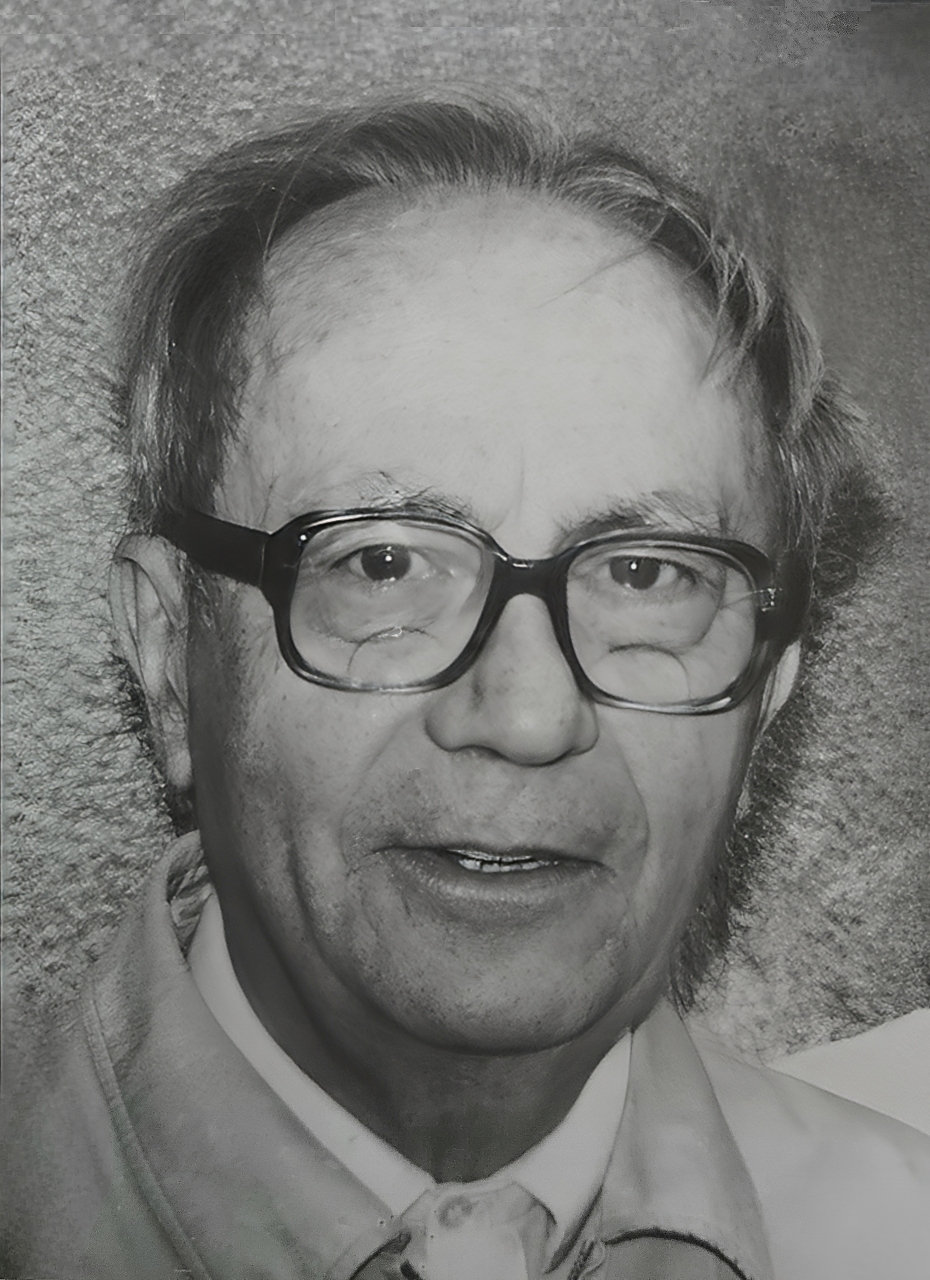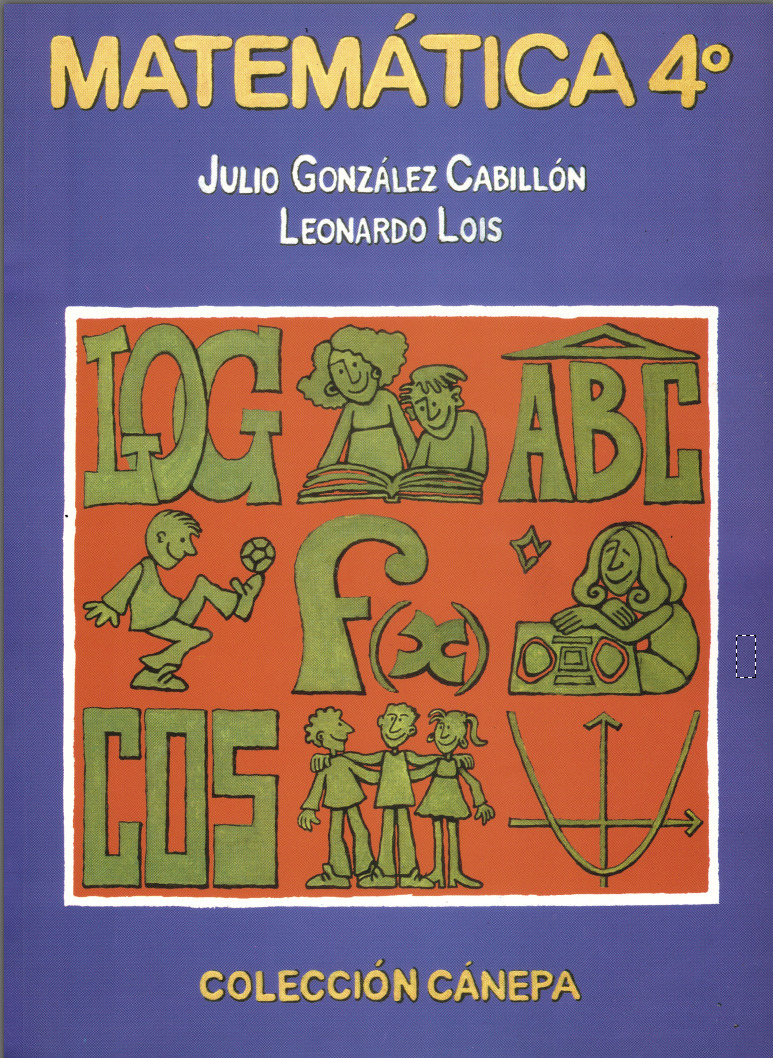Exploring the Life of
Jorge Héctor Cánepa De Boni

Jorge H. Cánepa was a distinguished Uruguayan mathematics teacher and writer, remembered for his dedication to education and his tireless work in producing innovative teaching materials.
He was born in Montevideo on 26 June 1920 and spent his early years in Buenos Aires, where he began his education. In 1931, his family returned to Uruguay and settled in the capital. Despite having skipped both the fifth and sixth years of primary school, in 1933 he sat the entrance exam for Liceo No. 4 “Juan Zorrilla de San Martín” and passed with the highest distinction. It was an early sign of his remarkable diligence, unwavering responsibility, and tireless initiative—traits that would define his life and legacy.
A Passion for Mathematics Forged Through Teaching
During his secondary education, Jorge H. Cánepa found inspiration in prominent Uruguayan mathematicians who had a profound influence on his calling. One such figure was Rafael Laguardia, who, after completing his studies in France, returned to Uruguay and, in 1942, founded the Institute of Mathematics and Statistics at the Faculty of Engineering, an institution that now bears his name.
Another important influence was his professor José Luis Massera, who co-founded the aforementioned institute alongside Laguardia. Massera made a lasting impression not only as a teacher but also through his significant contributions to differential equations and stability theory. He is internationally recognised for the lemma that bears his name.
These mentors inspired Cánepa to delve deeply into the theoretical and abstract areas of mathematics. However, he soon realised that his true vocation did not lie in engineering but in unravelling the mysteries hidden within numbers. One of his most memorable sayings, which captures his wit and unique view of mathematics, sums up this pursuit:
“When a problem has no solution,
it is solved.”
This original perspective would later lead him to transform mathematics education in Uruguay.
Early Steps in Teaching and Professional Development
At his mother’s urging, in 1942 he accepted a teaching post in mathematics at the Liceo Departamental de Florida. Among the faculty was Dr Carlos Wettstein, a respected figure in Uruguayan education and father of geographer Germán Wettstein, who encouraged Cánepa to pursue the teaching profession.
In 1943, he sat a competitive exam and earned a permanent position. The panel, chaired by engineer Celestino Galli, praised his performance and encouraged him to pursue what would become his lifelong vocation.
Family and Literary Vocation
In 1952, he married Elvira (“Perla”) Galain, with whom he had two daughters, Elena and Silvia. In March 1954, he joined the staff of Deutsche Schule Montevideo (DSM), where he taught for more than 30 years, until his retirement in July 1985.
In 1956, he began writing as a member of the editorial board of REMA (Revista de Matemática Elemental).
Together with Celiar Silva Rehermann, he co-authored the series Cursos de Iniciación Matemática, which revolutionised secondary mathematics education in Uruguay.
Innovation and Legacy in Mathematics Education
In the early 1980s, in the DSM staffroom, a lasting friendship began with the author of these lines. Alongside Mónica, Luis, and Leo, they began crafting new materials that marked a turning point in the teaching of mathematics in Uruguay.
He approached teaching with a critical spirit and often said, with irony:
“On matters of taste and colour,
everything has already been written.”
In 1985, he became Inspector of Mathematics, expanding his contact with educators nationwide and deepening his view of national education.
For 45 years — from 1942 to 1987 — he devoted himself to teaching in both public and private education, spanning secondary and higher levels. In 1987, after a long and fruitful career, he chose to retire. As a true lover of numbers, he selected the timing with care: after all, it was the only prime year of the decade! Yet his retirement did not mean a farewell to learning; instead, he found a new calling in the education of his grandchildren, always in the inseparable company of his beloved wife, Perla.
A Farewell and a Lasting Legacy
On 28 September 2011, as spring returned to Montevideo, Jorge Héctor Cánepa left us in the physical sense. Yet his influence lives on in generations of students and teachers shaped by his work. As someone who had the honour of knowing him and sharing in his passion for teaching, I can only say that he departed with the quiet satisfaction of having passed all of life’s subjects with the highest distinction.
Notable Works by Jorge H. Cánepa
Throughout his career, Jorge H. Cánepa left a profound mark on mathematics education in Uruguay and beyond. His books, crafted with clarity and pedagogical rigour, became cornerstones for generations of students and teachers alike.
Below is a selection of his most representative works.
Secondary School Textbooks with Editorial Medina and Other Editions
- Celiar Silva Rehermann & Jorge H. Cánepa, Cursos de iniciación matemática: matemática 1º, Montevideo: Editorial Medina, 1961.
- Celiar Silva Rehermann & Jorge H. Cánepa, Cursos de iniciación matemática: matemática 2º, Montevideo: Editorial Medina, 1964.
- Celiar Silva Rehermann & Jorge H. Cánepa, Cursos de iniciación matemática: matemática 3º, Montevideo: Editorial Medina, 1967.
- Celiar Silva Rehermann & Jorge H. Cánepa, Cursos de iniciación matemática: matemática 4º, Montevideo: Editorial Medina, 1970.
- Celiar Silva Rehermann & Jorge H. Cánepa, Cursos de iniciación matemática: matemática 1º, 2da. edición, La Habana: Instituto del Libro, 1968.
- Celiar Silva Rehermann & Jorge H. Cánepa, Cursos de iniciación matemática: matemática 4º, La Habana: Editorial Científico-Técnica, 1983.
Textos liceales con la Editorial Monteverde
New editions of the four previously mentioned Cursos de iniciación matemática were later published by Editorial Monteverde, along with other works.
- Celiar Silva Rehermann & Jorge H. Cánepa, Tablas de matemática elemental, Montevideo: Editorial Monteverde, 1971.
Textos escolares en la Editorial Kapelusz
- Ariel Silva, Hugo Rodríguez Aldabalde & Jorge H. Cánepa, Tempranito: secuencia matemática para primer año escolar, Buenos Aires: Editorial Kapelusz, 1973.
- Ariel Silva, Hugo Rodríguez Aldabalde & Jorge H. Cánepa, Guía del maestro: complemento de Tempranito, Buenos Aires: Editorial Kapelusz, 1973.
- Ariel Silva, Hugo Rodríguez Aldabalde & Jorge H. Cánepa, Paso a paso: secuencia matemática para segundo año escolar, Buenos Aires: Editorial Kapelusz, 1974.
- Ariel Silva, Hugo Rodríguez Aldabalde & Jorge H. Cánepa, Guía del maestro: complemento de Paso a paso, Buenos Aires: Editorial Kapelusz, 1974.
- Ariel Silva & Jorge H. Cánepa, Saltarín: secuencia matemática para tercer año escolar, Buenos Aires: Editorial Kapelusz, 1977.
- Ariel Silva & Jorge H. Cánepa, Guía del maestro: complemento de Saltarín, Buenos Aires: Editorial Kapelusz, 1977.
Colección Ma.Ci.Ba. en Ediciones de la Casa del Estudiante
- Ariel Silva & Jorge H. Cánepa, Aritmética: primer año del ciclo básico, Montevideo: Ediciones de la Casa del Estudiante, 1979.
- Ariel Silva & Jorge H. Cánepa, Geometría: primer año del ciclo básico, Montevideo: Ediciones de la Casa del Estudiante, 1980.
- Mónica Zambra, Luis Belcredi & Jorge H. Cánepa, Magnitudes absolutas: teorema de Thales, Montevideo: Ediciones de la Casa del Estudiante, 1982.
Colección Cánepa en Ediciones de la Plaza
Driven by a desire to modernise mathematics education, he developed teaching materials aligned with emerging pedagogical approaches. Convinced of the need for renewal, he embraced this challenge as a personal mission—one that is evident in every one of his works.
- Julio González Cabillón, Luis Belcredi & Mónica Zambra, Aritmética 1º, Colección Cánepa, Montevideo: Ediciones de la Plaza, 1988.
- Julio González Cabillón, Geometría 1º, Colección Cánepa, Montevideo: Ediciones de la Plaza, 1990.
For the Year 4 textbook, Professor Leonardo Lois joined the team, and the collection was expanded with a publication that cemented Professor Cánepa’s legacy in secondary education:
Galería de imágenes


- Julio González Cabillón & Leonardo Lois, Matemática 4º, Colección Cánepa, Montevideo: Ediciones de la Plaza, 1995.
Finally, under the same publishing house, Jorge H. Cánepa encouraged me to create a textbook of great depth and originality for the baccalaureate level.
- Julio González Cabillón, Matemática 5to., tomo I, Colección Cánepa, Montevideo: Ediciones de la Plaza, 1992.